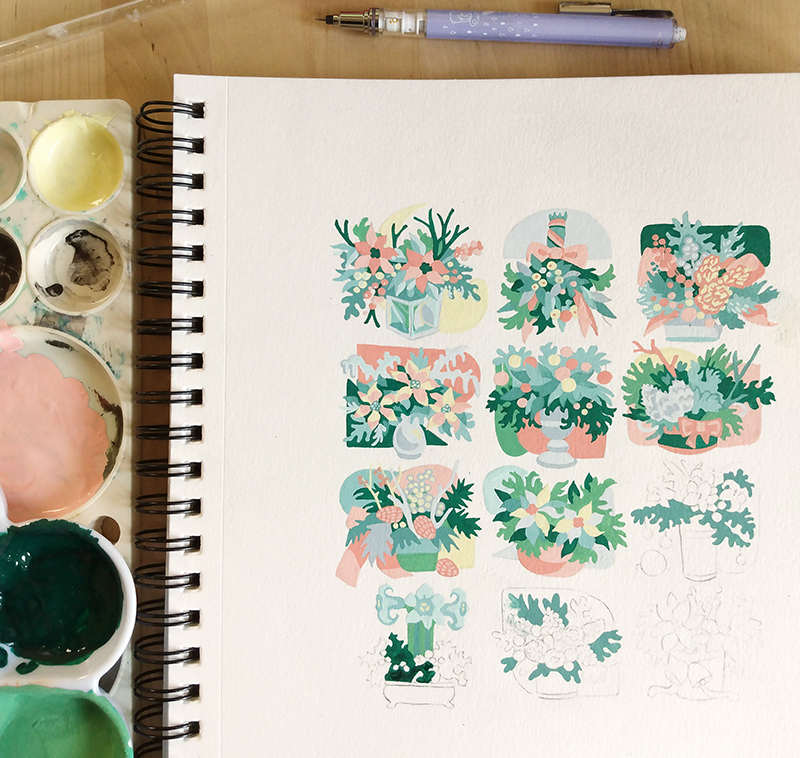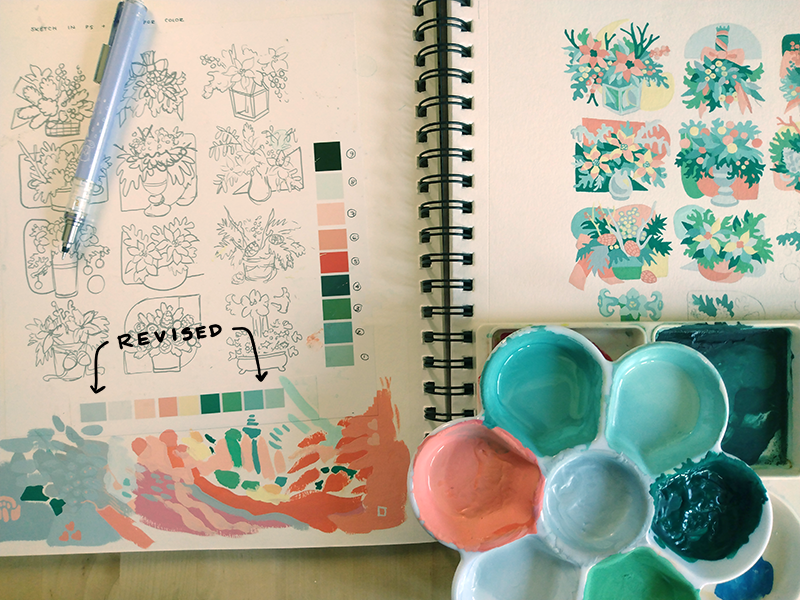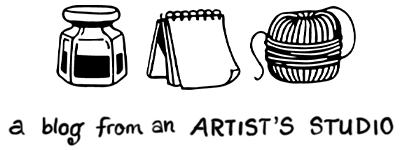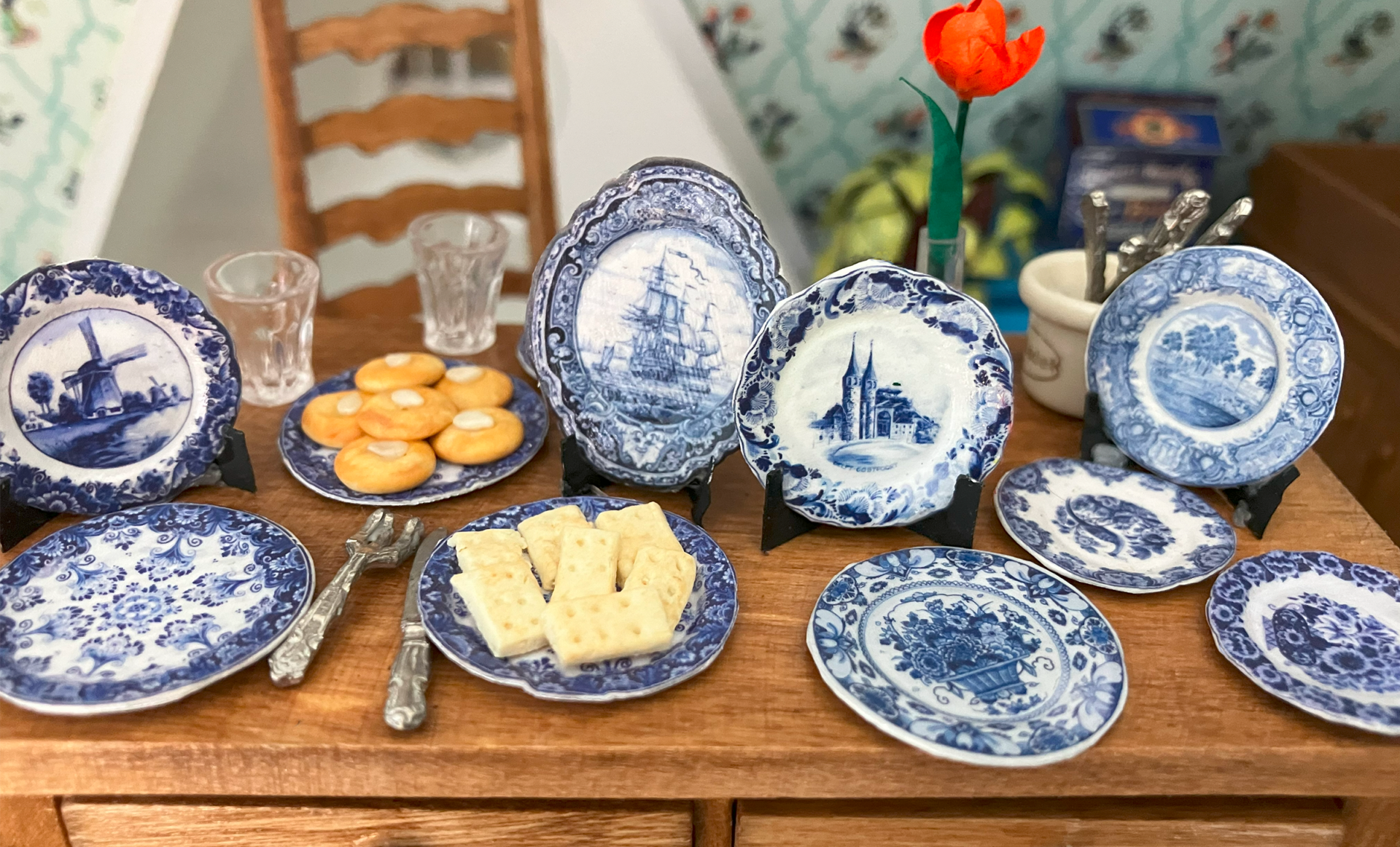
I started this week out with a nice sunny day in the studio, filling another grid of botanical illustrations with color. This time, the theme of my gouache painting is winter greenery in a pastel palette. My colors are drawn more from the soft hues of winter sunsets and sunrises over snowy landscapes than holly bough reds and greens.
Gouache is so flat and crisp-looking when it dries that working with a limited palette is a joy rather than a restriction. This stage of the painting goes pretty quickly, as I fill everything with an even layer of color. The really challenging and fun part, meanwhile, is to decide where all of the colors go. It’s like a game of Sudoku, but instead of trying to distribute numerals to fit across rows and columns, I have nine colors and a bunch of relational color theory “rules”.

The warm natural light that’s so nice to paint under doesn’t actually do my photos any help where color-matching is concerned, but this shot shows how I prefer to do a lot of my work. Since I never know which doodles are going to become full-blown drawings, I’ve learned for myself that it’s best to work in sketchbooks with sturdy paper like good-quality watercolor paper. In most cases, this also has the added benefit of being able to be used on both sides! Unless you’re working with something that soaks through the page, like watercolor or marker, this conveniently creates a workspace on the facing page of anything in the sketchbook. In cases like this, where I’m doing some planning and color matching, it’s really useful to have my swatches (and a handy place to clean my brush) right next to my piece.
The only trick with this method is to protect the pages when they might get smudged or wear onto each other, either with spray fixative or adding a barrier between with piece of wax paper hinged on a bit of masking tape. It should probably go without saying, but if you do any work on the opposite page, you’re also going to want to make sure to leave your sketchbook flat to dry in between painting sessions!

